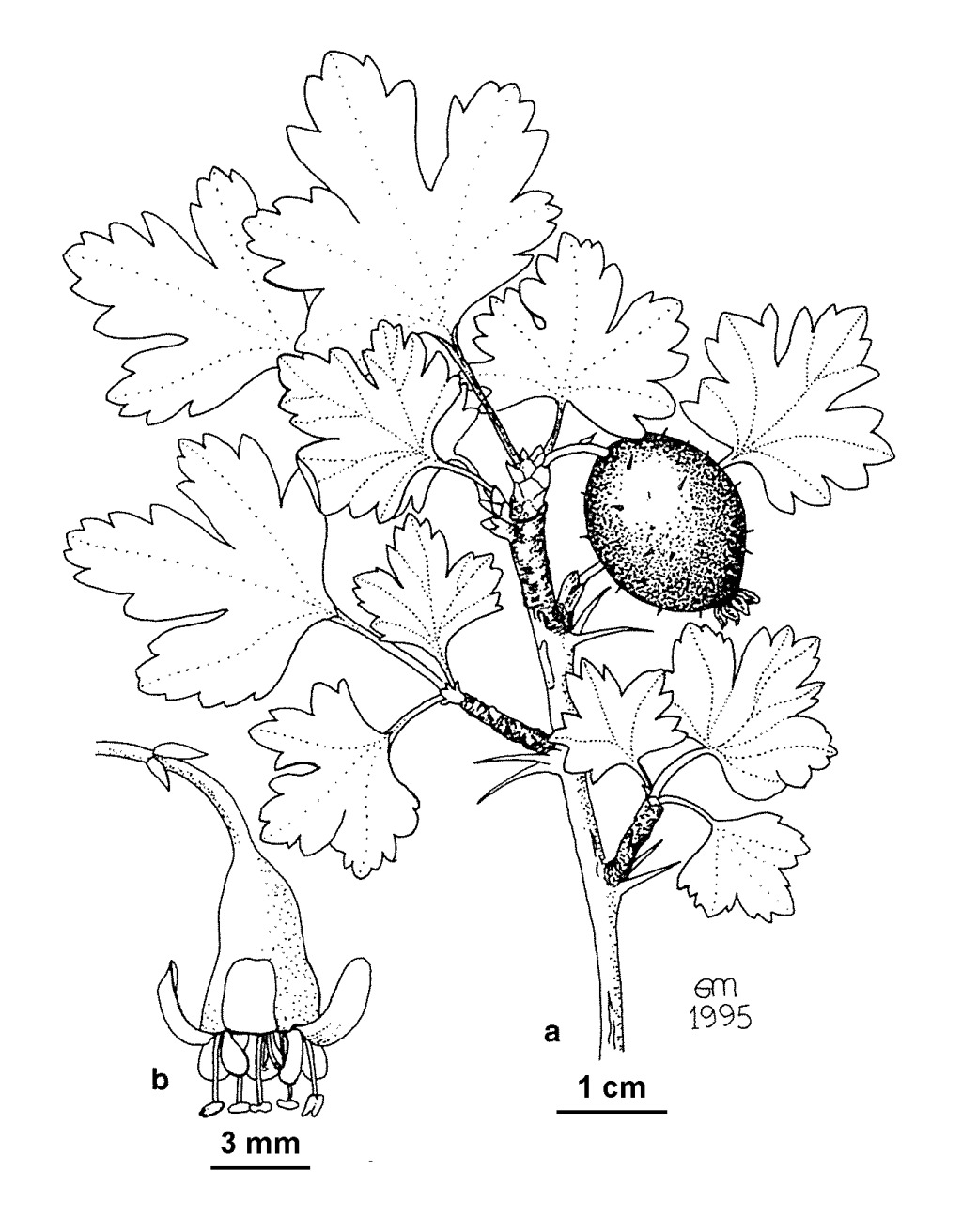Grossulariaceae
Shrubs, often prostrate or climbing, sometimes spinescent. Leaves alternate to spirally arranged, simple, but sometimes deeply lobed or incised; stipules adnate to base of petiole. Inflorescence a raceme, small contracted cluster or flowers solitary, from upper axils, or terminal. Flowers usually bisexual (seldom unisexual and plants then often dioecious); sepals (4–)5, fused in at least the lower part, sometimes produced into a tubular hypanthium, the lobes sometimes petaloid and exceeding the petals; petals as many as and alternating with sepals, or sometimes absent, stamens as many as- and opposite sepals; anthers longitudinally dehiscent; nectary disc often present; ovary usually partly inferior, sometimes quite inferior, unilocular, 2-carpellate; styles 2, partially to almost wholly fused. Fruit berry, topped by persistent calyx; seeds numerous.
1 genus and c. 160 species from temperate areas of the Northern Hemisphere, and extending down the Andes Mountains in South America. 3 species reported as naturalised in Australia.
Previous Flora of Victoria treatment followed Cronquist (1981), including c. 25 genera in Grossulariaceae (including Argophyllaceae, Escalloniaceae, and Tetracarpaceae). Recent molecular studies have supported the long-standing assocation between Grossulariaceae with Saxifragaceae, but have also provided evidence to maintain them as distinct families (see Weigend 2007).
Walsh, N.G. (1996). Grossulariaceae. In: Walsh, N.G.; Entwisle, T.J., Flora of Victoria Vol. 3, Dicotyledons Winteraceae to Myrtaceae, pp. 539–541. Inkata Press, Melbourne.
 Spinning
SpinningWeigend, M. (2007). Grossulariaceae, in K. Kubitzki (ed.), The Families and Genera of Vascular Plants Volume 9. Springer, Berlin.


